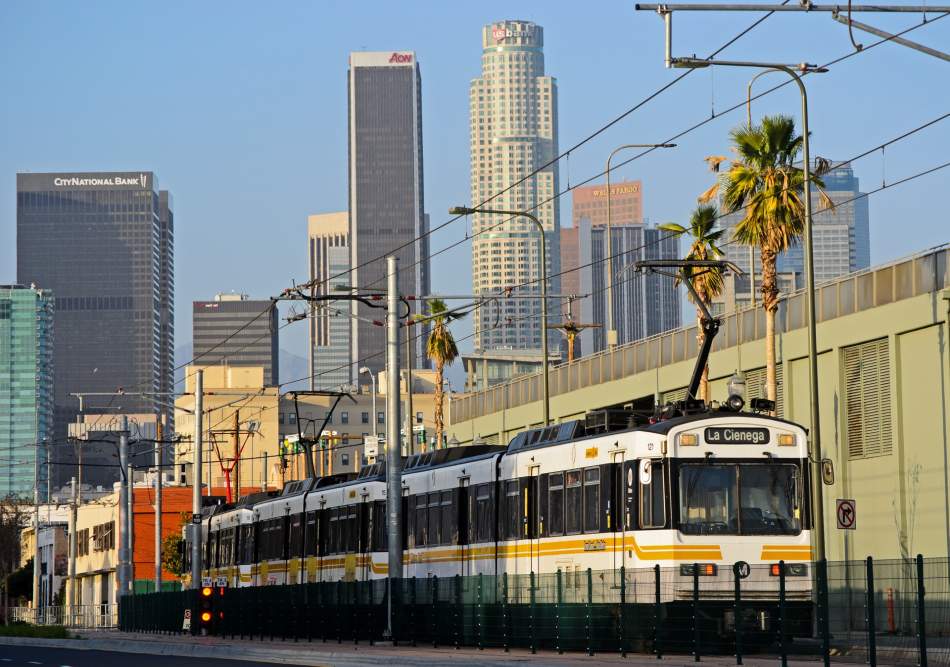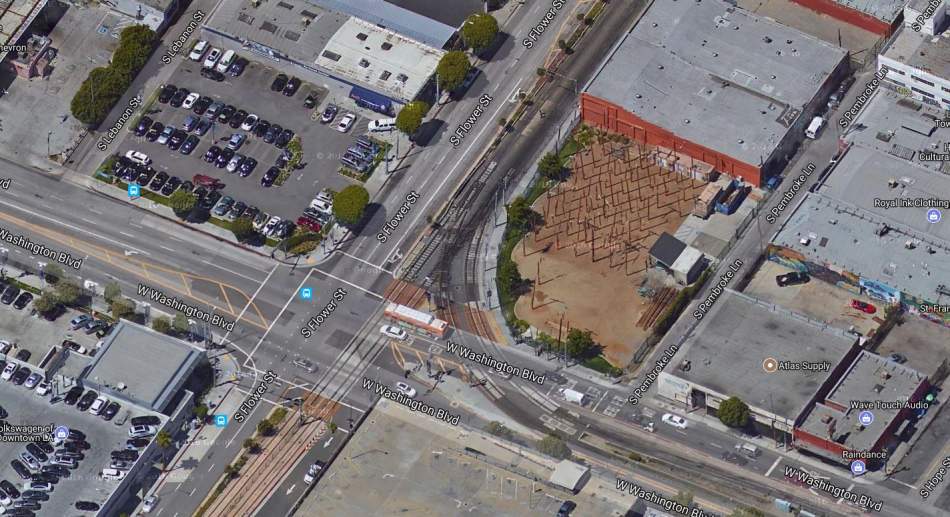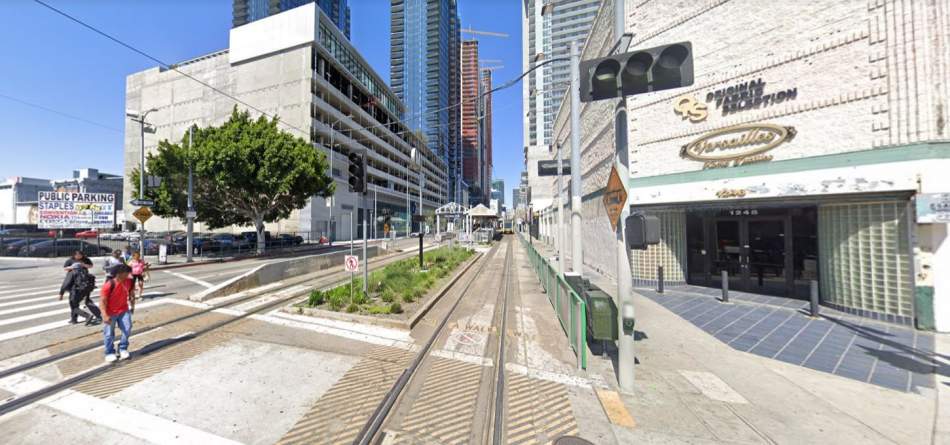With Metro on the cusp of adopting a service plan for the new Regional Connector subway in Downtown Los Angeles, several members of the agency's Board of Directors have renewed a push to address sluggish street-running sections of the three light rail lines which will feed into the nearly two-mile tunnel.
A motion adopted earlier today by the Board's Operations Committee directs Metro staff to begin to identify potential fixes to segments of the A (Blue), E (Expo), and L (Gold) Lines that frequently cause delays in service.
Additionally, the motion - which was introduced by Directors Robert Garcia, Eric Garcetti, Hilda Solis, Janice Hahn, Mark Ridley Thomas, and Mike Bonin - calls for Metro to expand its joint effort with LADOT to improve signal prioritization for the E Line to also include street-running segments of the A line, with the goal of averaging at least a 90 percent intersection clearance rate.
Metro staff has also been instructed to report on options for reconfiguring the Washington Boulevard - Flower Street wye, where the A and E Lines intersect in their street-level approach to 7th Street/Metro Center Station. A 2017 report to the Metro Board indicated that potential fixes to the roughly one-mile stretch of at-grade track could include full or partial grade separation as far north as Pico Station.
The potential grade separations, as well as improvements to signal priority, are expected to allow the A Line to cut its end-to-end travel time by approximately 10 minutes. The full trip on the 22-mile line between Downtown Los Angeles and Long Beach is currently expected to take 53 minutes - down from the 58 minutes prior to the $350-million "New Blue" refurbishment project.
The report direction by the motion, which is scheduled to be delivered in January 2021, is also asked to identity $30-million in funding for the improvements.
Metro's renewed focus on signal priority comes as the Regional Connector is expected to merge three light rail lines into two: a north-south corridor between Long Beach and Azusa and an east-west corridor connecting East Los Angeles with Santa Monica. While the completed project is expected to be a boon to the agency's ridership, Metro staff reports have indicated that indicated that more consistent service on the rail lines feeding into the connector - which often are forced to stop for cross traffic at intersections - is needed to achieve desired headways within the tunnel.









